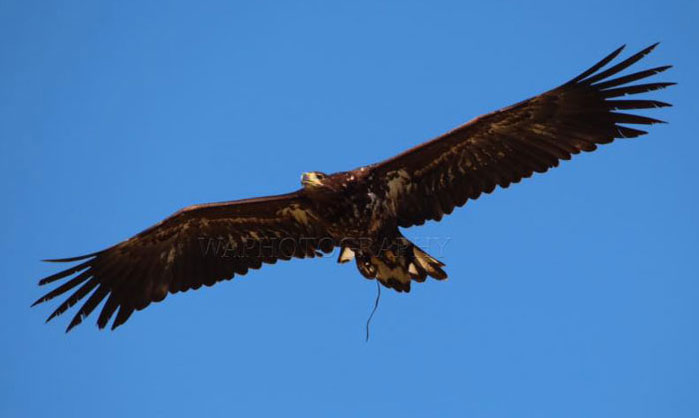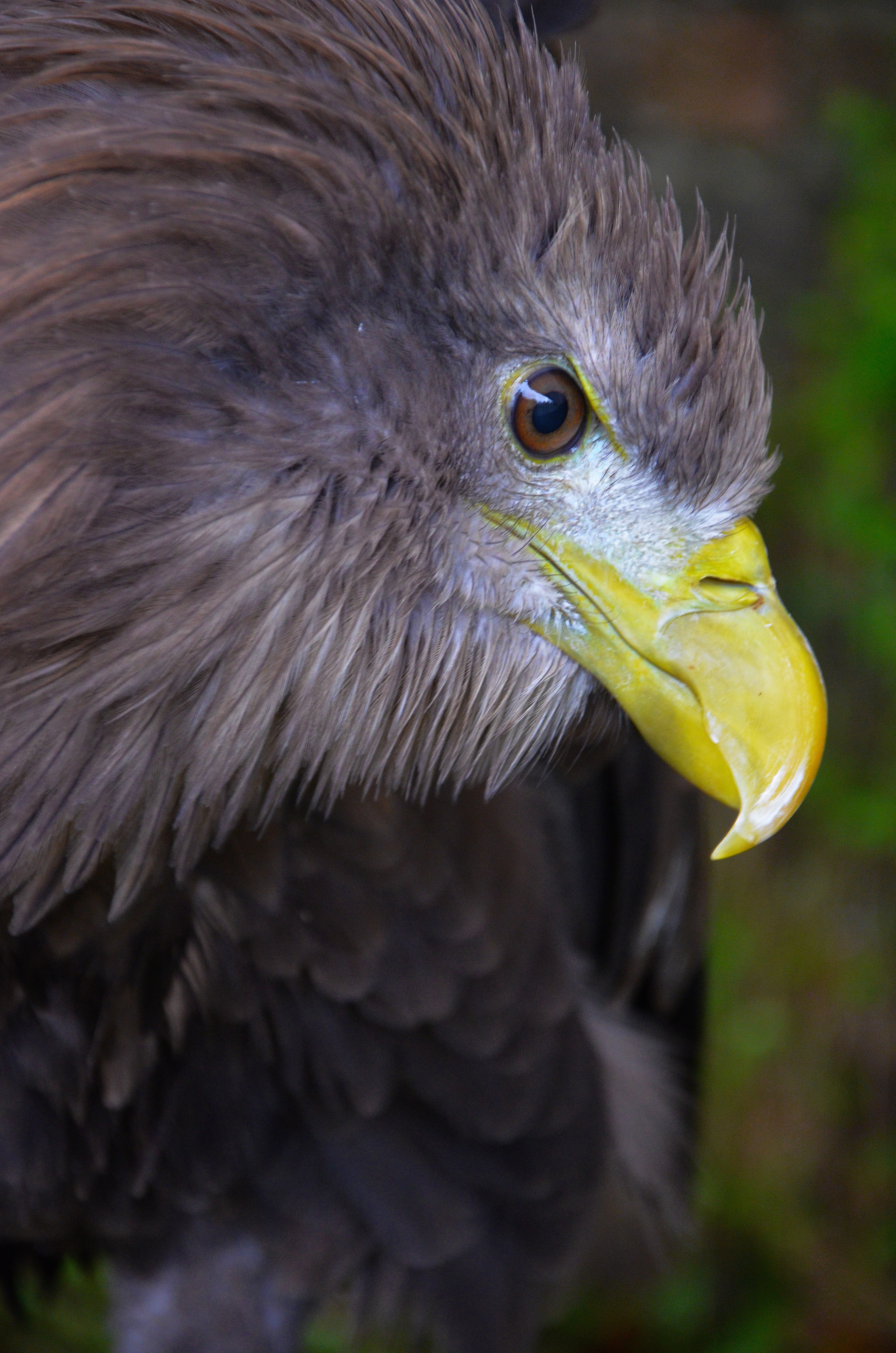White Tailed Sea Eagle

The White-tailed Eagle was fairly common throughout much of Europe until the early 1900s, when numbers started to decrease dramatically, mainly because of persecution that resulted in the loss of many of the western European populations.
While extensive conservation measures allowed the Eagles to recover in the 1970s, the impact of mercury and of organochlorine and other pesticides continued to reduce the breeding success into the 1980s.
The White-tailed Eagle was widespread in Scotland and Ireland in the 18th century, and also bred in England, Wales and the Isle of Man. Over 150 eyries were known in Britain and at least 50 in Ireland in the early 19th century. The species became extinct in the UK as a result of direct and sustained persecution by shepherds, gamekeepers, fishery owners, skin collectors and egg collectors.
By 1800, these factors drastically caused the species to disappear from Wales and England. It survived in Ireland a little longer, but by 1900 only a handful of pairs remained on the British Isles, all in Scotland. The last breeding record in Scotland was on the Isle of Skye in 1916, and the last British white-tailed eagle was later shot in Shetland two years later exterminating the full UK population.
A White-tailed Eagle reintroduction programme was established in 1975 conducted by the Scottish Natural Heritage and the RSPB. White-tailed Eagles were taken from Norway and released on the Isle of Rum in the Inner Hebrides, 82 birds were released over a 10 year period. The reintroduction programme had its first successful breeding pair in 1985, and since then several pairs have nested every year. Further Eagle releases were conducted in 1990 targeting Wester Ross, following this last initial release the population become self-sustaining in Scotland.
Following the success of the White-tailed Eagle reintroduction programme in Scotland, a reintroduction programme was established in Ireland in 2005. Eagles were released in Kerry, again from Norwegian origin, and an estimated 95 birds have been released since.
The White-tailed Eagle is included on the Red list of UK birds of conservation concern because of the long-term population decline and since it is a rare breeder in the UK and across its European range. Therefore, a possible reintroduction programme in Wales could potentially relieve the long-term declines of the British population, but also contribute to the international conservation of this species, to encourage the species to be self-sustaining by increasing its range and population numbers
Eagle Reintroduction Wales (ERW)
Eagle Reintroduction Wales (ERW) is a community-based research project investigating whether the Welsh landscape is healthy enough to feasibly sustain two native lost Eagles; the Golden Eagle and the White-tailed Eagle.
What's happening right now...
Eagle Reintroduction Wales' work centres around a collection of research questions that aims to analyse the welsh landscape to establish if it can sustain a healthy population of Eagles. White-tailed and Golden Eagles were once widespread across lowland, upland and coastal areas of Wales. Both Eagle species in Wales become locally extinct in the late 1800s, Eagle Reintroduction Wales is inviting the Welsh community to join us on our amazing journey to investigate whether Eagles can soar the skies of Wales again in the near future! Our work focuses on answering the following questions:
-> Research Question 1: Where did Eagle's naturally occur in Wales?
-> Research Question 2: What factors caused local extinction of Eagles in Wales, and have these factors been rectified?
-> Research Question 3: What are the habitat requirements for Eagles, and are these habitat requirements available in Wales?

-> Research Question 4: What will Eagles eat in Wales, and are these dietary requirements suitable for the Welsh Landscape?
-> Research Questions 5: How will Eagles impact the Welsh ecological and socio-economic environment?
When we have fully assessed each research question in detail we will then make the decision whether the Welsh landscape is feasible to sustain Eagles. If so, we will look into how many suitable release sites are available, how many eagles could be re-introduced into Wales, and how these individuals will disperse across the Welsh landscape over time. In addition, it is evident that the Welsh environment has changed since Eagles once soared in the skies of Wales. If the Welsh landscape is not feasible to sustain Eagles, we will then assess what conservation measures are needed in Wales to restore the environment back to its former historic health.
For more information ERW
